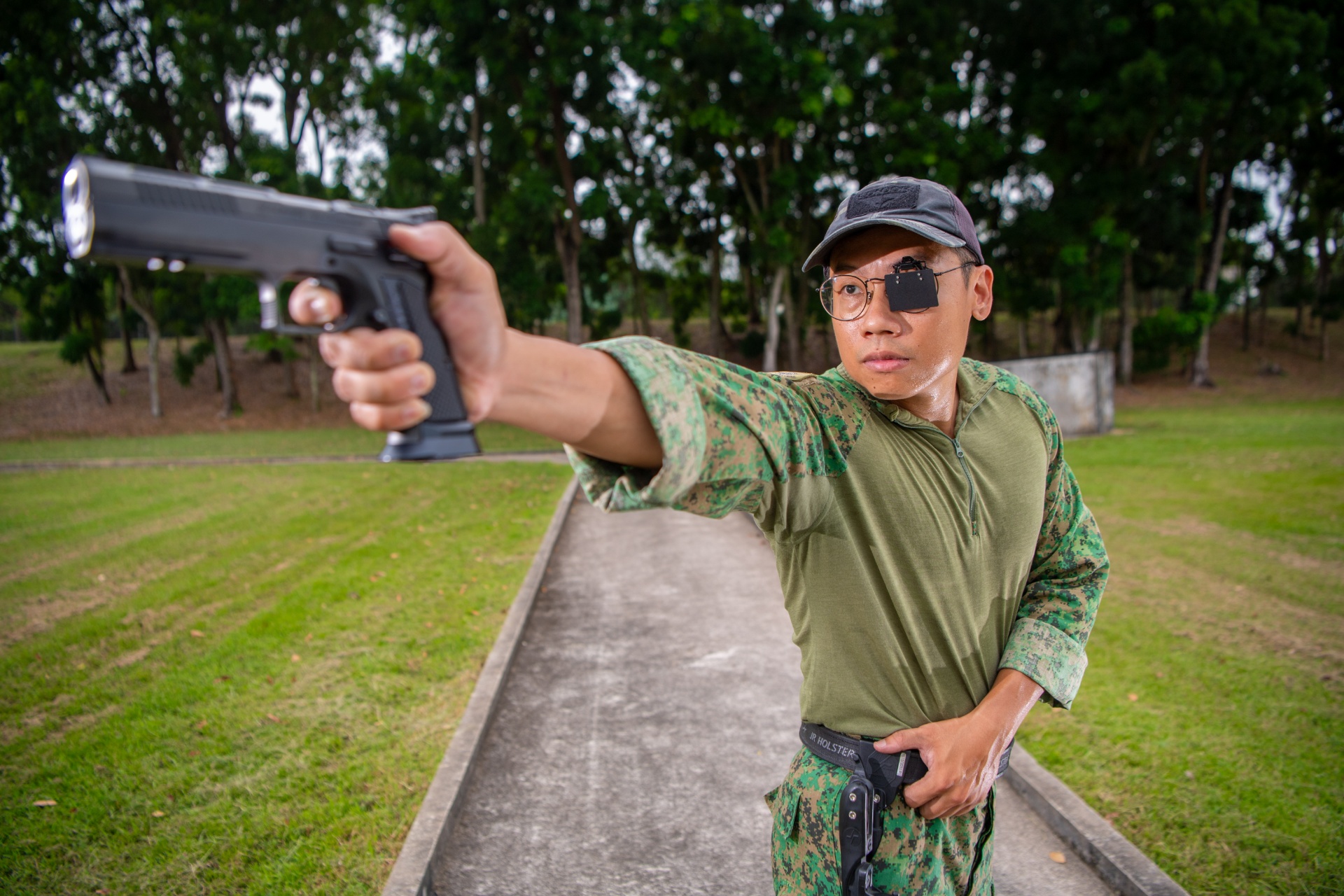TECHNOLOGY
SMART DEFENCE
01 Oct 2015
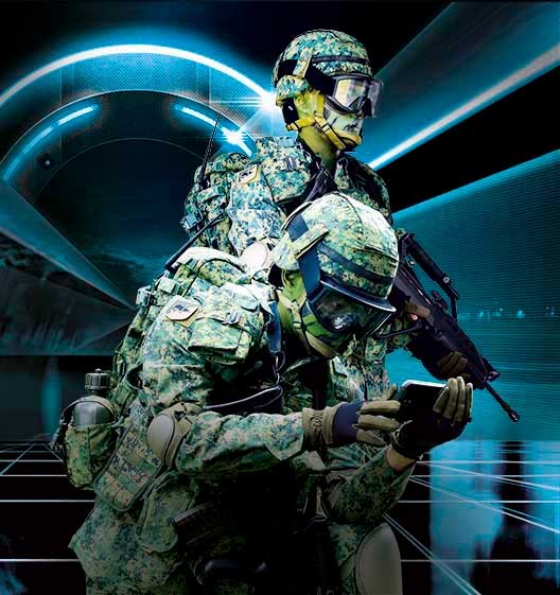
Themed Smart Nation, Smart Defence, this year's MINDEF PRIDE Day was held at the Singapore University of Technology and Design, where 187 awards were presented to individuals, groups and units in recognition of their innovative ideas. Collectively, these innovations helped save the organisation $141.8 million.
Here's a look at some of the award-winning projects.
3SG Lee feels that the improved version is a lot less strenuous on the eye and much easier to use.
iLite? We like.
"The Basic Fighting System (BFS) was slow You would become frustrated when using it. On top of that, it weighed 6.5kg."
Although the BFS gave soldiers unprecedented access to networked battlefield data in great detail and accuracy, this was a common gripe of soldiers who used the BFS. One of the systems under the Advanced Combat Man System (ACMS), the BFS is a wearable digital system that transforms soldiers into digitised warfighters. At 6.5kg when issued with a spare set of batteries, it was a significant load that soldiers had to carry on top of their combat loads, which threatened to adversely affect combat performance, stamina and reactivity.
"The BFS heats up a lot. When you're carrying it, you can feel the heat even though you have your uniform and Load Bearing Vest," added 3rd Sergeant (3SG) Lee Zheng Yi.
The 20-year-old Operations Specialist from Headquarters 9th Singapore Division/Infantry (HQ 9 DIV/INF) was explaining the problems faced by section commanders when using the BFS. These included it being too heavy, having a long set-up time and not being very user-friendly.
Going Lite-weight
The BFS was created in 2010 with the aim of providing soldiers with access to a networked system of data and communication. Together with remote sensors, soldiers can track the positions of friendly and hostile forces, effectively engage their targets and concentrate efforts at critical locations.
Traditionally used by two team leaders and the section commander in a seven-man team, the BFS consists of a personal radio, communication keypad, portable computer, head-mounted display and weapon interactor.
Over the years, the Army collected valuable feedback on the system being heavy, easily heated and having several unnecessary functions. This prompted the development of the ACMS iLite - a lighter version weighing just 2.5kg with functions specific to what the commanders on the ground needed.
"The iLite is meant to be more mobile and portable, and is used by the section commander, section-in-charge and second-in-charge," explained Captain (CPT) Jeremy Ong.
The Head of Soldier Systems Development from HQ 9 DIV/INF revealed that the ACMS iLite was simplified from the original nine to six key functions. These included the ability to mark danger areas, call for medics and enemy contact alert. The BFS will now only be used by platoon commanders and above to plan detailed operations.
Smart phone, smarter device
Another key difference of the ACMS iLite is the replacement of the communication keypad, portable computer and head-mounted display from the BFS with a smart phone. The head-mounted display is a wearable eyepiece that doubles up as a computer to show the user all the information he needs. Unfortunately, the eyepiece was not very user-friendly and could strain the eye.
3SG Lee said: "The eyepiece works like a computer screen and you have this Nokia-phone-like controller which functions as both a keyboard and mouse. When you want to select something, you have an up, down, left and right button which you have to keep pressing to move to a selected area just to mark an item.
"It was also very strenuous for the eye and you had to concentrate pretty hard just to look at the screen, as compared to the smart phone."
CPT Ong added: "The smart phone interface is more user-friendly. Plus, the current generation is used to playing electronic games and the interface is designed in such a way tha t it feels like you're playing a game. Everything is laid out on the screen so it's very easy to find the options," said the 30-year-old.
Faster learning curve
With the smart phone, the time taken to learn the system is also reduced - from three days to just half a day.
3SG Lee, who teaches both the BFS and ACMS iLite, shared that when he taught the former, he had to teach the soldiers how to set it up, and it was tough to pinpoint a problem when the soldiers ran into difficulties navigating the system.
Said CPT Ong: "We scaled down the functions for iLite and were very specific about what we wanted to offer commanders on the ground... With one glance, you know where to go and what to click. That's why the learning process is a lot faster."
Since its implementation in 2014, the ACMS iLite has been used by the 3rd and 6th Battalions, Singapore Infantry Regiment, and 3rd Battalion, Singapore Guards. In future, all active infantry units will use the system.
Despite the enhancements, there are still plans to continue improving the ACMS iLite. Said CPT Ong: "We are still collecting feedback on the user interface. If some functions are lacking and we assess that adding new ones is useful, we will tweak and refine the system... Different versions will eventually emerge to cater better to our soldiers' needs."
Enhancing reliability checks
"Incremental changes could have been done but we told ourselves that we needed a complete solution. What we were looking for was a quantum leap - a totally new idea," said Military Expert (ME) 3 Kumaran Naidu of the Republic of Singapore Navy (RSN).
"Most of the time, our improvements were made to overcome immediate problems without understanding why we're doing what we're doing."
The Subject Matter Expert of the 76mm OTO Melara Super Rapid Gun from Force Readiness Squadron (FRS), Naval Logistics Command, explained that his team of 10 took a holistic approach when they worked on overcoming the problems posed by the current tools used to analyse the reliability of the 76mm OTO Melara gun used on ships.
With 29 of such guns on the ships, these guns have to be tested often to keep them in tip-top condition. In one of the critical gun performance tests, the crew had to use cumbersome equipment to take distance-over-time measurements to analyse the performance of the gun.
From big to tiny: The 35kg electric motor driven plotter (below) is now replaced with the laser distance sensor which is much lighter, faster and produces more precise results.
Old, big and bulky
The conventional method used to measure the gun's performance was an electric motor driven plotter weighing about 35kg, which used pencil and paper to plot graphs to measure the recoil.
"The challenges that we faced were the installation and removal of the equipment. It was labourious and time-consuming," said the 40-year-old.
"Another problem we had was (with) the pencil and paper. When you use a fine pencil lead, you can easily spot a small glitch because it's so fine. But if you use a blunt pencil, the lines drawn would not be as fine, so it would be harder to detect minor glitches."
This meant that the crew had to often replace the paper and pencil to ensure optimal resolution of graphs. Other problems included the fact that the testing process was subjected to the mercy of the weather.
"The testing would be done at the South China Sea where the paper would be exposed to sea water. Once the paper gets wet, you can forget about measuring performance and the whole trip out to sea and back is wasted."
The smart shrink
ME3 Naidu and his team - Ordnance Warriors - then chanced upon a commercially-used method that used lasers to measure distance over time in tracking the suspension of trucks and decided to adapt this technology into the naval guns.
From the research to implementation phases, the entire journey took one year and the Laser Distance Sensor was eventually implemented in mid-2014.
This new device was much smaller and lighter (1kg), could be installed within the gun, and produced more accurate results which were now tracked on a computer.
ME3 Naidu said: "The thing about (using) lasers is that it does not require maintenance, is weather-proof, requires a small storage space and is self-calibrated. Unlike the pencil lead plotter where we had to calibrate it by ourselves, this is done with just a press of a button, and just once."
The time taken to install and measure the system was also greatly reduced - from eight hours to just one.
Team member ME2 Gilbert Soh shared that using the Laser Distance Sensor was a great morale booster for the team.
"When we get the results now, we get it in a detailed format. We can zoom in on the results and see where the various points of measurements are. The old method was using the pencil so we had to scrutinise very carefully to see which lines belonged to which rounds."
The 27-year-old was also glad that the days of transporting the old bulky equipment through the narrow corridors in groups of three were over.
"As there were no proper handles on the old equipment, it was very tough to transport it from one compartment to another within the ship, especially up and down the vertical ladders. We also had to be on deck often to calibrate the pencil plotter and it was slippery. Now, everything can be done indoors."
Constant improvement
The spirit of going all-out to achieve that "quantum leap" did not stop with the success of the Laser Distance Sensor. Three months later, ME3 Naidu and his team revisited the project to see how they could further improve processes.
They found out that the crew still had to wait for the ship to go back to shore in order to print the results from a laptop before analysing them. This meant a four hour lag before the data could be retrieved. To make the process more efficient, the team decided to convert the laptop into standalone plotters, which could print results on the go.
"Our bosses always say that we need to do things better or do better things," said ME3 Naidu.
"With that in mind, we need to look at initiatives which can really give us that extra edge to do more with less."
Affordable, effective replacement
Expensive tools do not necessarily give you the best results. Sometimes, a simple off-the-shelf device can do the same thing with much less effort.
This was what ME3 Ng Yong Yong and his team learnt when they were looking for a solution to combat the issues surrounding the checking of the F-15SG covert lights.
These lights are used by pilots during night flying. They help to prevent any collision of aircraft as they close in on one another. Such covert lights cannot be seen by the naked eye and can only be seen with special Night Vision Goggles (NVGs).
As such, these lights have to be checked to ensure that they are working fine before the planes take off for their night training and ME3 Ng was part of the crew doing the maintenance checks.
Working in the dark
"We usually had to wait till nightfall, put on the NVGs and then check the lights. Or we would tow the aircraft into an enclosed area, shut the doors to prevent light from filtering through, then use the NVG goggles to see if all the lights are working."
The Officer Commanding of Electrical and Instrumentation Flight at 817 Squadron (SQN) explained that just towing the aircraft would require six men and the entire process could take up to half an hour. Other than towing the plane, the crew would also have to tow a 5.5m step ladder in order to conduct checks on the covert light located high up on the tail of the plane.
"Imagine looking through a tube, that's what our vision is like when we are wearing the goggles. And because our field of vision is narrowed, we may knock into the sharp edges around the aircraft and injure ourselves in the process."
Hampered by such hindrances at work, ME3 Ng and his team of five - Team Rectifier - decided to embark on a search for a cost-effective device to solve their problems.
Bright lights paradise
The idea came to him when he saw his son playing with a remote control. Knowing that the covert lights used the same kind of signal transmissions as those in a remote control, he wondered if there was a similar device that could be used to check the lights.
Through long hours of research, the team finally succeeded in using a digital camera to replace the NVGs to conduct checks.
Explaining the concept of using the digital camera, ME3 Ng said: "Infrared waves are emitted from the aircraft, and a normal digital camera is sensitive to these waves.
"As the covert lights are emitting infrared waves, they will be projected onto the digital camera screens as bright white lights. This is how we can check if the lights are working."
That was only the tip of the iceberg. With the digital camera, the crew can just point and check the covert lights to see if they are working fine without having to tow, drag or wait for nightfall.
The zoom function in the camera allowed checks to be conducted from a distance away. This meant that the crew could now check the covert lights from afar under the shelter even during inclement weather.
You light up our lives
The digital camera was especially useful when it came to overseas deployments, such as Exercise Pitch Black, where pilots would typically engage in plenty of night flying.
ME5 Chew explained that if the ground crew know that the aircraft is going to be used for night flying, they can use the digital camera to check the lights during the day, instead of waiting for dusk, and replace them if they are faulty. This increase in checking and maintenance effectiveness also helps to boost the availability of the aircraft.
"The plane should be there when the pilot needs it. In the past, the crew would have to change the faulty lights in the day and then wait till nightfall to check if they were working. By then, the plane will only be ready for the following morning's flight," said the 43-year-old.
"But with the digital camera, the crew can check if the covert mode is working immediately after they replace the lights, and the aircraft can be flown."
Think wild
With this ingenious method approved and implemented in end-2014, Team Rectifier not only helped the SAF save a substantial sum, they also impressed their Peace Carvin V counterparts in the United States so much that the latter have star ted to adapt this method for their checks.
Said ME3 Ng of the team's success: "It was a tough journey and the solution did not come easy. We were throwing out crazy ideas on how to solve these issues and went through difficulties trying to convince the management to accept our idea.
"But we pressed on, believed in it and succeeded. Because sometimes, you just need someone garang (brave/tough) enough to come up with an out-of-the-box suggestion to change things for the better."
With the EAS, casualties will be able to receive advance resuscitation on site and enroute to the hospital. This not only shortens the evacuation time, but also improves casualty care and increases survivability.
$9.6m saved with joint ambulance project
Of the $141.8 million savings achieved in the last financial year, a big chunk came from a joint project between the Singapore Armed Forces (SAF) and the Singapore Civil Defence Force (SCDF).
Implemented on 19 Jan, the Emergency Ambulance Service (EAS) allows casualties to be evacuated from SAF training areas directly to pre-designated restructured hospitals while receiving appropriate care along the way.
Head Plans Branch from Headquarters Army Medical Services Lieutenant Colonel (LTC) Choo Jui Sheng said: "The EAS will respond to any serious casualty in the training area within 11 minutes, allowing the casualty to have the earliest access to critical
resuscitative care."
As there were limited paramedic resources within the SAF, there was a need to tap on private ambulance operators. However, hiring them would have cost $15 million a year. Thus, the SAF decided to work with the Singapore Civil Defence Force (SCDF) on a joint tender approach.
The joint project amounted to $5.4 million, and this innovative solution helped the SAF to save $9.6 million. For this, LTC Choo and his team were awarded the 2015 SAVE Award.
While LTC Choo and his team were honoured that their solution was awarded and implemented, they are currently exploring other areas of cross-ministry collaboration, such as with the Ministry of Health (MOH), restructured hospitals and SCDF. These include the sharing of medical training facilities and integrated MOH, SCDF and SAF response to Humanitarian Assistance and Disaster Relief operations.
Innovative technologies for a smarter SAF
Themed Smart Nation, Smart Defence, this year's PRIDE Day reflects MINDEF's journey into Smart Defence by harnessing technology to bring value to individuals and to the Ministry of Defence (MINDEF) and the Singapore Armed Forces (SAF) at the organisational level. This was also in line with the national vision of building a Smart Nation.
Then-2nd Minister for Defence Lui Tuck Yew, who officiated at the award presentation ceremony held at the Singapore University for Technology and Design (SUTD) on 2 Sep, shared that since its beginning, the SAF had always leveraged technology to transform its defence, integrate platforms and create a unified approach to warfighting.
He said: "Looking ahead, as the SAF of the future will be even leaner, we must make technology work harder for us, so as to maximise every soldier's potential in operations and relieve as much as possible the exposure of our personnel to dangerous, or even laborious and mundane tasks."
Among the innovative technology exhibited at PRIDE Day was Project Systems Technology for Autonomous Reconnaissance and Surveillance (STARS). Inspired by the Moroccan spider which has the ability to crawl, climb and roll, this spider-like device could possibly be used to aid the SAF in the surveillance of key installations in the near future.
The final state envisioned for STARS, one of the projects under the Future Systems and Technology Directorate, is to have hundreds of such "spiders", small enough to be hidden from the human eye and for them to move in a group - unmanned.
ALSO READ IN TECHNOLOGY
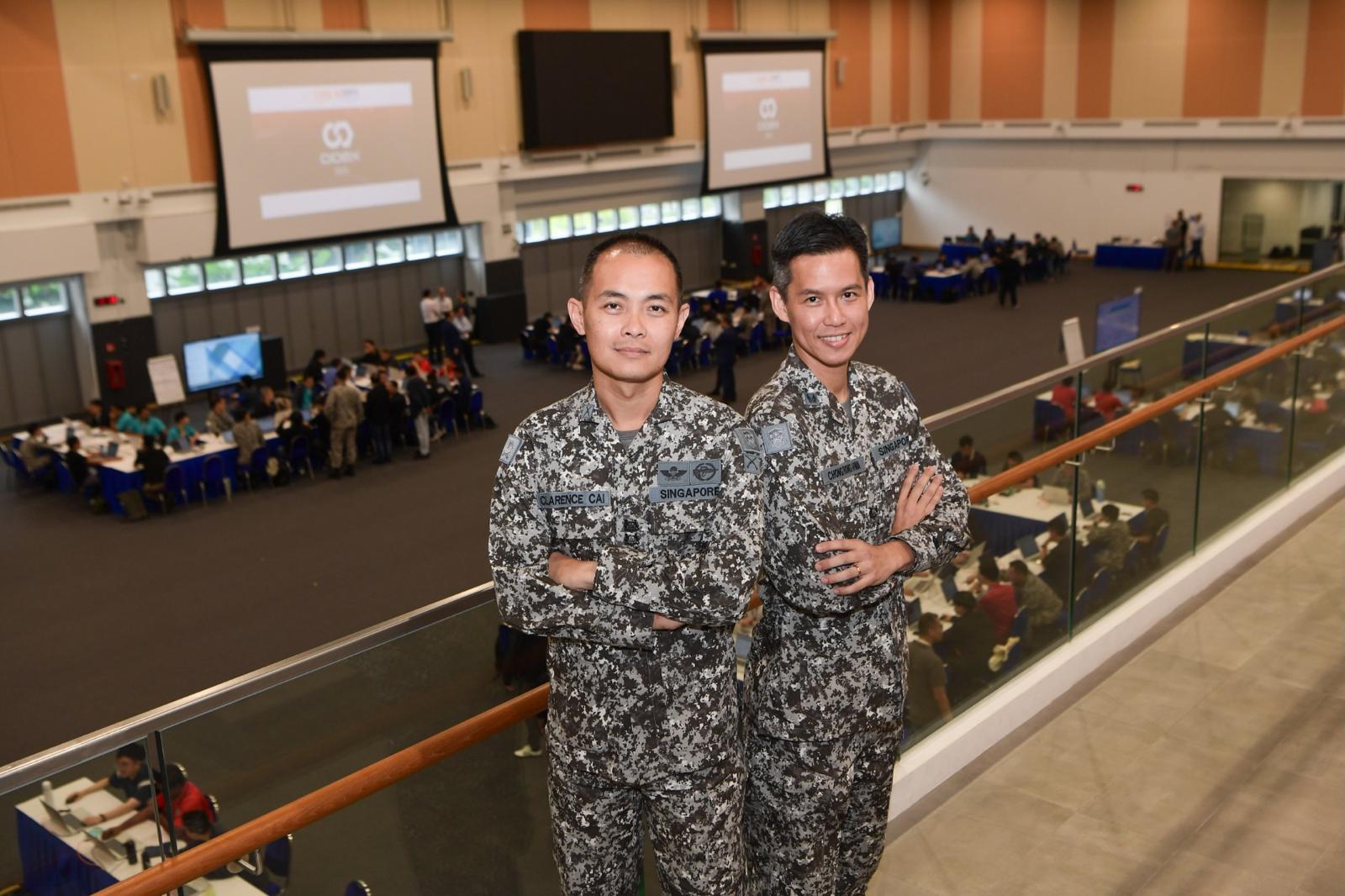
AI joins the fight in national cyber defence exercise
12 Nov 2025
AI and closer collaboration among agencies and industry are taking centre stage in this year’s Critical Infrastructure Defence Exercise (CIDeX).
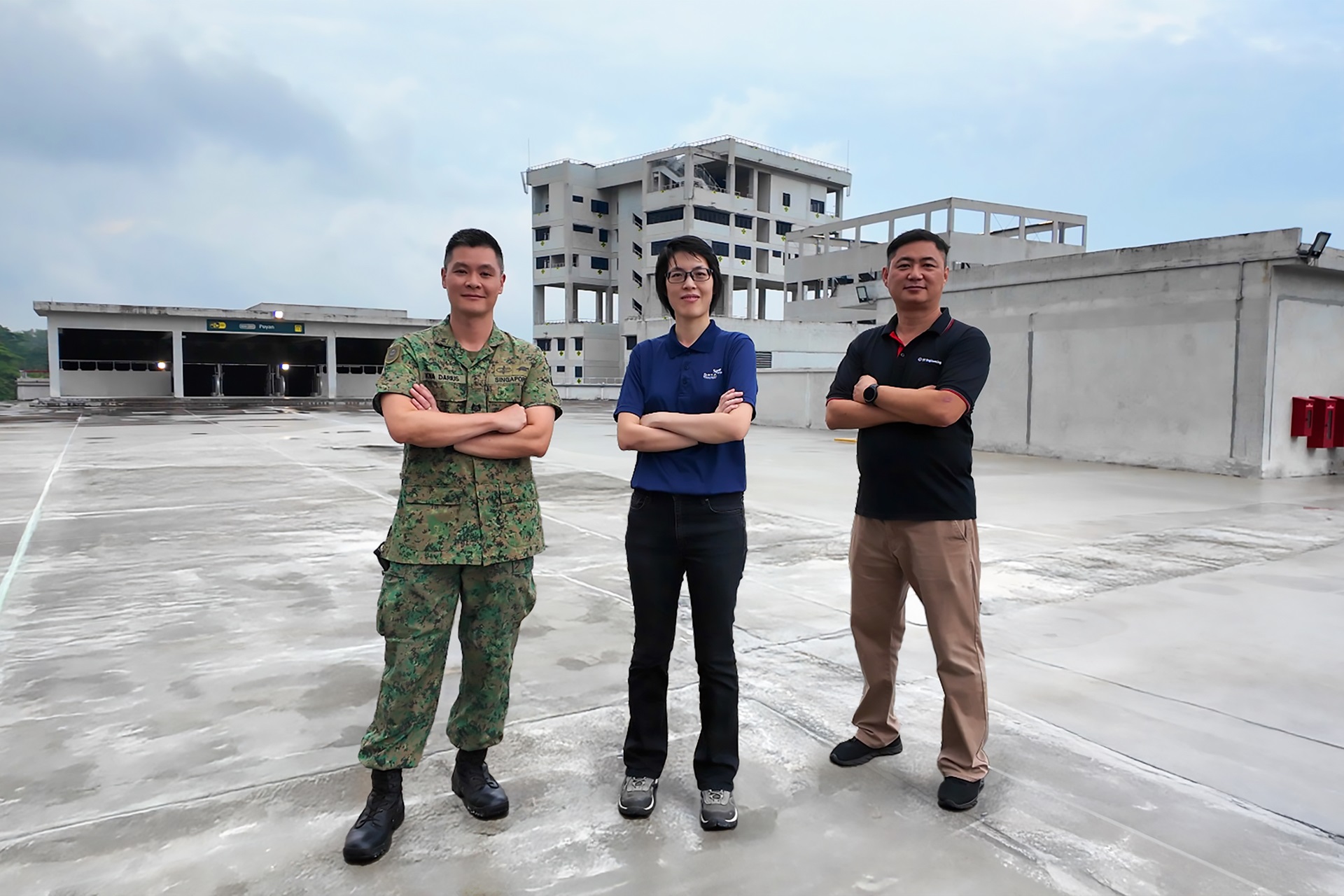
They built this city
01 Oct 2025
Turning vision to reality: the team behind SAFTI City clinches the Defence Technology Prize 2025 Team (Engineering) Award!
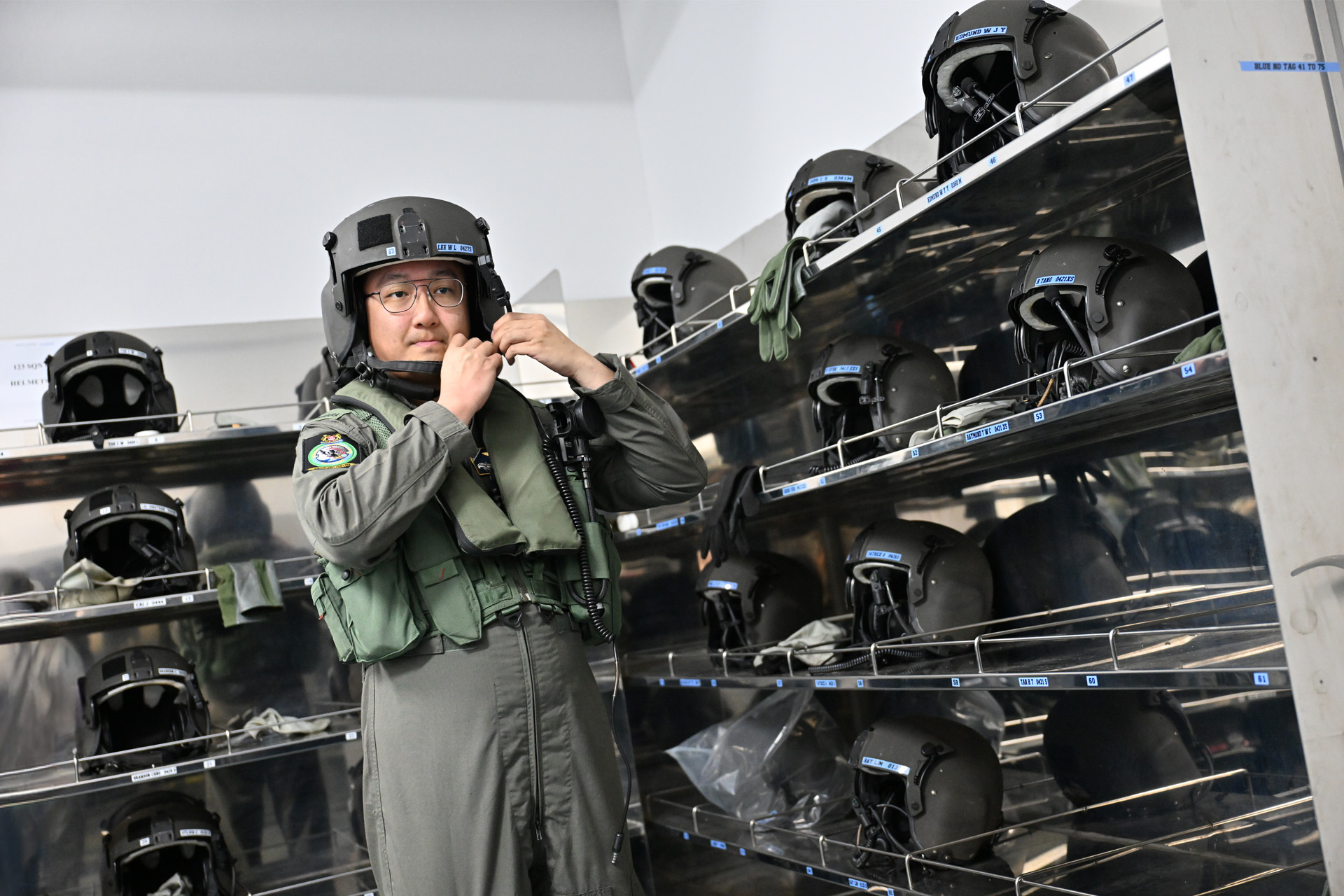
Operating over skies & seas
22 Aug 2025
This gear is designed to help a Sensor Supervisor survive emergencies in the air and at sea.


